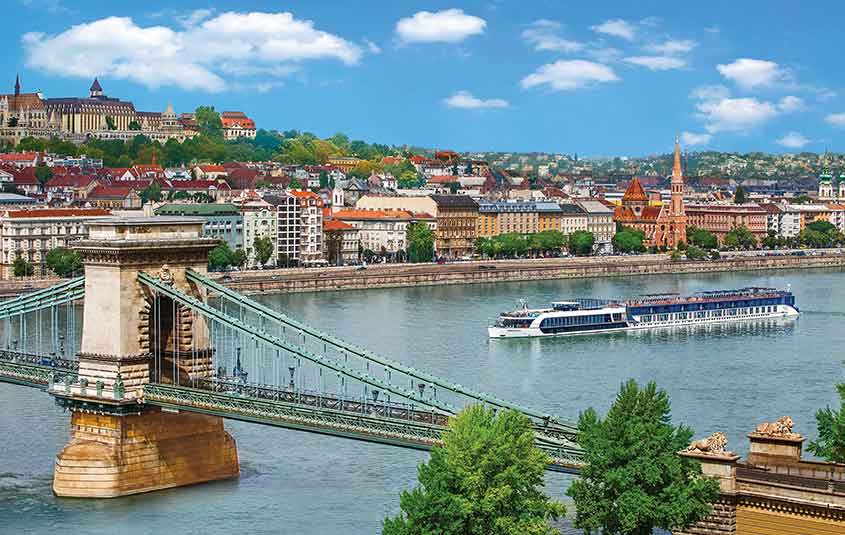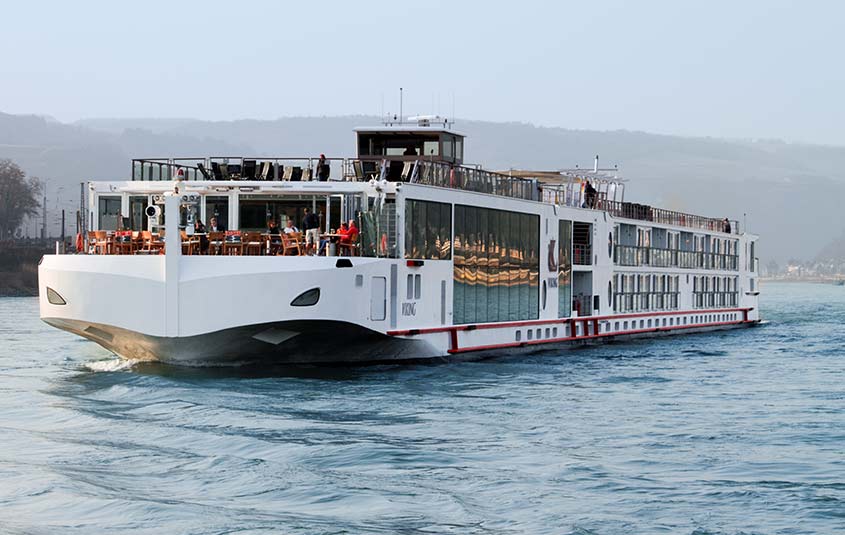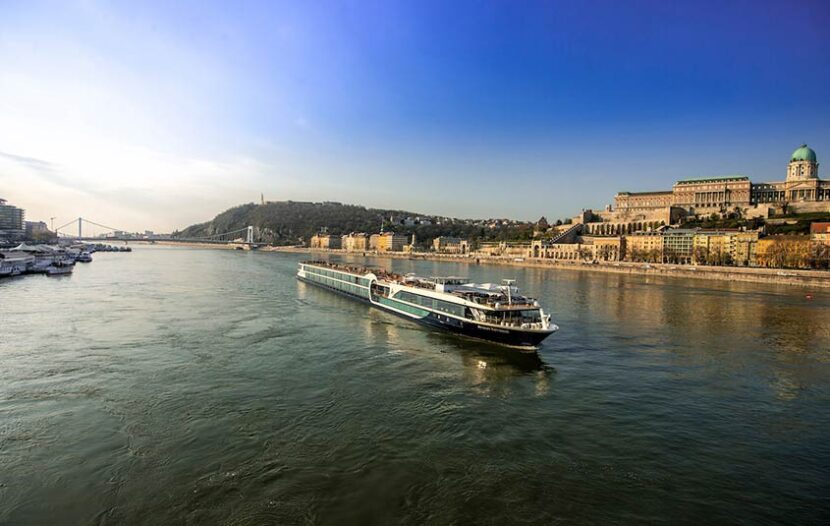TORONTO — It’s hard to believe that the global travel industry could be hit with back-to-back crises, but here we are – at the tail end of a global pandemic that saw widespread travel restrictions and border closures for over two years, and now in the midst of a record-breaking drought in Europe, which is wreaking havoc with the very same rivers that river cruise lines sail on.
According to the EU’s European Drought Observatory, approximately 63% of the land across the EU and the UK had either drought warnings or alerts in early August, up from 46% in July. Water levels along parts of the Rhine and Danube rivers, both extremely popular among river cruisers, were among the worst hit. And even worse news? Climate experts are predicting that droughts will be a regular occurrence in the coming years due to the worsening fallout from climate change.
So how are river cruise lines responding to the current drought, and which itineraries have been impacted? We check in with several companies to assess the situation.
AMAWATERWAYS
Rudi Schreiner, Co-Founder and President of AmaWaterways, which boasts a 25-ship fleet and sails on 10 rivers in Europe, tells Travelweek that all of its ships are once again sailing their original planned itineraries following recent rain on the Rhine and Danube rivers.
“We are seeing water levels begin to return to normal,” says Schreiner. “With 20 years of river cruise experience, we have successfully managed low water scenarios as an ongoing part of our business. From the decision on which rivers to sail and selection of ports of call, to the design of our ships and creation of our ship itineraries, these are all factors that come into play as we introduce new experiences and make adjustments to our existing offerings.”

AmaSonata on the Danube in Budapest (photo credit AmaWaterways)
Schreiner also notes that AmaWaterways’ ships have been designed with “some of the lowest drafts in the industry,” which allow the company to sail through lower waters than other cruise lines, and that itineraries have been constructed to either avoid certain critical points or facilitate ship swaps between sister ships on either side of these points. To raise its ships in the water, AmaWaterways’ captains are authorized to empty the ballast and fresh tanks “if those extra few inches will get us through safely.”
In the event that the situation changes and itineraries are affected by future droughts, Schreiner says that the company is always well prepared with alternative plans, should local authorities temporarily curtail river traffic on any portions of the Rhine or Danube rivers. These plans may include alternative docking locations, modified shore excursions and ship swaps, if necessary.
“During the cruise, guests are kept advised by the Captain and Cruise Manager of any last-minute modifications. If modifications to the cruise have been major and warrant a Future Cruise Credit, we follow up with written communication to travel advisors and their guests within 45 days of their return,” he says. “While modifications due to low water are completely outside of our control, if a guest’s river cruise has been subject to major modifications due to low water, we offer Future Cruise Credits in line with the extent of those modifications.”
VIKING
Viking, which sails on eight rivers in Europe and offers 26 different European itineraries, is currently sailing the vast majority of its river itineraries without interruptions. However, a Viking spokesperson tells Travelweek that water levels on the lower Danube, near Bulgaria, remain unusually low, and as such, select itineraries will be affected to varying degrees.
Guests and their travel advisors will continue to be notified directly by Viking Customer Relations should the company think their itinerary may be impacted.
The spokesperson notes that Viking has two key advantages with regard to handling water level disruptions.

Viking Longship on the Rhine (photo credit Viking)
“First, we own and operate our ships. We have a Switzerland-based nautical team and a network of local partner and authorities that are focused on monitoring and adapting to current water levels so that our guests experience the least possible disruption,” they say.
“Second, we strategically launch sister ships on the same itinerary, but sailing in opposite directions. In the event of low (or high) water, this tactic allows us to implement a ship swap that is typically seamless for guests. Both they and their luggage are able to be transferred to their exact, identical stateroom on a sister ship that was purposefully sailing on the other half of the river in preparation for such a disruption.”
Their statement continues: “These advantages allow us to minimize the impact that water levels can have on an itinerary, which means our guests are better able to focus on enjoying themselves and having a great journey, rather than worrying about potential changes or cancellations.”
To read the full article, including responses from Uniworld and Avalon Waterways, check out the Sept. 1 edition of Travelweek here.
Got a story idea? Reach out to Deputy Editor Cindy Sosroutomo at cindys@travelweek.ca.

